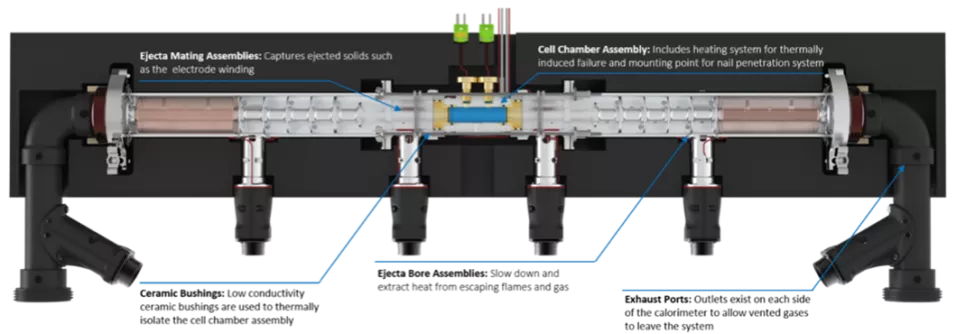September 20, 2021
Fractional thermal runaway calorimetry (FTRC) is a technology used to test the impact of battery failures due to a thermal runaway event. This technique expands on existing battery calorimetry technologies, such as accelerating rate calorimetry (ARC), bomb calorimetry, and copper slug calorimetry, taking the test results to a whole new level by providing more detailed analysis of the heat release as well as the mass released during a thermal runaway event.
FTRC is a unique technology, able to quantify the pathways of thermal energy release during a battery thermal runaway event (i.e., battery body, vent gases, ejecta). Exponent is driving this industry-changing technology forward by licensing FTRC technology from NASA for use with our commercial clients. With Exponent's 20+ years of experience in battery failure analysis, we are in a unique market position to perform these tests and interpret the results that impact our clients. Many markets that Exponent supports may benefit from the technology and insight afforded by FTRC, including consumer electronics (e.g., product design), aerospace, automotive, and utilities.

The new FTRC will be located at Exponent's office in Natick, Massachusetts, which is home to ~20 experts who regularly consult on batteries, from materials to systems and everything between. For a deeper dive into understanding battery thermal runaway and how the FTRC technology could help you and your team, please refer to the following sources:
- Explore the NASA STI Repository (NTRS)
- Decoupling of heat generated from ejected and non-ejected contents of 18650-format lithium-ion cells using statistical methods
- Modelling and experiments to identify high-risk failure scenarios for testing the safety of lithium-ion cells
How Exponent Can Help
Exponent routinely analyzes various aspects of lithium-ion battery safety spanning from product design to response to mechanical, thermal, and electrical abuse; cell thermal runaway propagation; and fire suppression.



